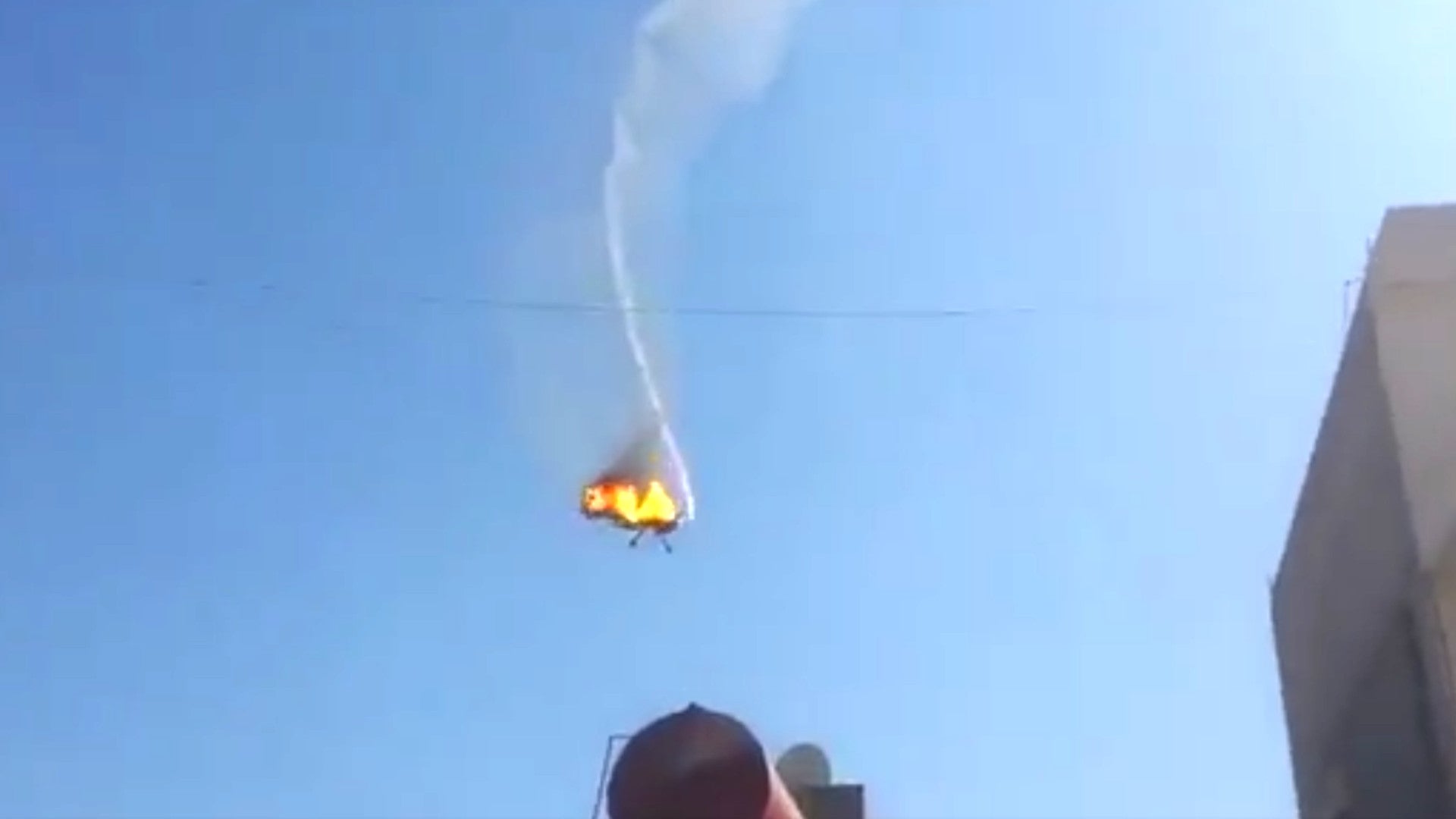Houthi rebels in Yemen have shot down a U.S. Air Force MQ-9 Reaper drone operating over the country. The loss highlights a steady increase in counter-terrorism operations aimed at neutralizing Al Qaeda’s regional franchise operating out of Yemen under President Donald Trump’s administration.
On Oct. 1, 2017, Houthi fighters, reportedly near Yemen’s capital Sana’a, brought down the unmanned aircraft. Video emerged online showing a portion of the MQ-9 spiraling into the ground in flames, but not the moment the pilotless plane apparently exploded.
“We assess that an MQ-9 unmanned aerial vehicle was shot down in western Yemen,” U.S. Army Major Earl Brown, a spokesman for U.S. Central Command told Military.com. “The details on the specifics of the mission are not releasable for [operational security reasons] and we don’t want to get ahead of any investigation.”
It is unclear how the Houthis shot down the drone. Saba, Yemen’s new agency, which the group controls, simply said its forces had destroyed the unmanned aircraft.
One possibility is that the rebels employed a man-portable surface-to-air missile system, or MANPADS. In 2013, the U.S. military and Yemeni Coast Guard seized one shipment of weapons bound for the group that included a number of Chinese QW-1M missiles, derived from the Russian 9K310 Igla-1. Though not the most advanced of these types of weapons presently available, these shoulder-launched missiles still pose a significant threat, especially to relatively slow-flying and aircraft such as the Reaper.
It’s unclear how many MANPADS type weapons the Houthis might actually have, though. If it turns out one of these missiles did knock out the Reaper, it could indicate a significant development in the conflict. For decades, these missiles have had outsized impacts on a number of conflicts, most famously the resistance to the Soviet invasion of Afghanistan, but more recently in countries such as Iraq, Syria, and Ukraine.
This incident might suggest the rebel forces may be able to increasingly challenge the Saudi-led coalition that has been fighting to restore President Abdrabbuh Mansur Hadi’s government to power. The Saudis and their partners have been conducting a brutal and controversial aerial campaign since 2015, which many say has deliberately targeted civilians.
It is also possible that the Houthis shot the Reaper down with a light anti-aircraft gun. However, drones like the MQ-9 usually operate at altitudes where they are out of reach of this kind of enemy fire.

We also don’t know what the drone’s particular mission was at the time. Though almost undoubtedly operating from the U.S. base at Chabelley Airfield in Djibouti across the Gulf of Aden, it is possible that the aircraft could have been either gathering intelligence or conducting a strike. Though the United States has not actively engaged the Houthis, it resumed attacks Al Qaeda in the Arabian Peninsula after a hiatus following the collapse of Yemen’s internationally recognized in September 2014.
In April 2016, American special operators returned to the country to work with the United Arab Emirates on containing the resurgent Al Qaeda terrorists, who had exploited the chaos to rebuild and regroup. In January 2017, the two countries partnered directly on a deadly and controversial raid that left one SEAL and a number of civilians dead in the country’s Al Bayda Governorate.
The U.S. military has been actively supporting the Saudi-led coalition’s fight against the Houthis and other groups logistically, primarily mid-air refueling. The United States had supplied intelligence information, before appearing to scale back that support in 2016. The exact extent of American support for the Saudi-led operations at present is uncertain, even to the Pentagon, according to a report in September 2017 by The Intercept.
Photos of the wreckage that subsequently appeared on social media showed the data plate from the drone’s engine and parts of a M299 Hellfire missile launch rail. This suggests the Reaper may have been on a strike mission against Al Qaeda terrorists at the time or beforehand.
In 2017 alone, there have been more than 100 confirmed U.S. air strikes, including those by manned and unmanned aircraft, in Yemen, according to The Bureau of Investigative Journalism. This is a significant increase over the previous year, with just 32 publicly acknowledged aerial attacks in 2016.
This also appears to be the first instance where the U.S. military has acknowledged that insurgents shot down a drone in Yemen. Drones have crashed in Yemen before, but these have been accidents rather than the result of enemy action and the U.S. military has generally declined to confirm or deny the circumstances one way or another. In February 2017, photos emerged online of one such apparent Reaper crash, where the aircraft might have been carrying specialized gear to find and track target cell phones linked to individual terrorists.
Regardless, the Houthis have long sought to retaliate against American military personnel in retaliation for their aid to the Saudis in the past, attacking multiple
off Yemen’s coast in 2016. It seems likely that if they’ll continue to take advantage of any opportunities in the future to try and destroy more U.S. military drones.
Update: Here is a video supposedly showing the use of a MANPADS to take down the Reaper in Yemen. We cannot authenticate the video and it is blurred which obviously doesn’t help with doing so.
Contact the author: joe@thedrive.com
